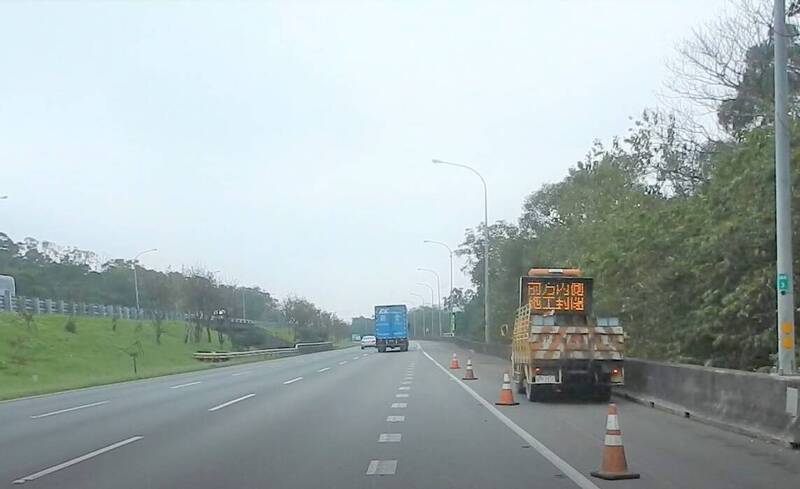During construction, there are warning signs on the outer shoulder of the road to remind the public to pay attention.
(Provided by Gaogong Bureau)
[Reporter Ding Yi/Taipei Report] When constructing national highways or dealing with accidents, they are equipped with marked vehicles and mobile anti-collision facilities in accordance with the regulations of the Highway Bureau to strengthen the safety of personnel and equipment in the protection work area, but people often do not pay attention to the road conditions ahead. A slow-collision car is hit 114 times a year, and 40-50% of the accident vehicles have a driver assistance system. The Gaogong Bureau calls on drivers to pay attention to the situation in front of the car even if the assistance system is turned on.
The Highway Bureau emphasized that during the construction of the national highway, various warning facilities have been set up to provide construction information in accordance with relevant regulations. However, due to the slow speed of mobile construction vehicles, there is a large speed difference from the normal traffic flow on the main line. Passers-by should always pay attention to the status of the vehicle and the road. Relevant warning facilities to avoid collision accidents caused by unresponsiveness.
Please read on...
According to statistics from the National Highway Bureau last year, there were 114 traffic accidents in which slow-collision vehicles were hit during national highway construction and accident handling, and the number of accidents involving vehicles equipped with driving assistance systems was 47 (accounting for about 41%); by the end of February this year, there were 12 accidents There were 6 construction and accident handling traffic accidents in which a slow-collision vehicle was hit, and the number of vehicles involved in the accident was equipped with driving assistance systems (accounting for 50%). Therefore, passers-by should still pay attention to the state of the vehicle and Provide warning facilities along the way, and intervene in time to control vehicles.
The Gaogong Bureau pointed out that at 10:08 am on March 28 this year, at the 46.4 km southbound of the No. 1 elevated highway, a small passenger car crashed into a slow-collision car in the inner lane for fog lamp maintenance work because it did not pay attention to the state in front of the car. In addition to causing injuries to the driver of the passenger car, the rear traffic flow was also blocked for 5 kilometers.
The Gaogong Bureau pointed out that in order to maintain the safety and quality of the national highway, road maintenance operations need to be carried out regularly, and for road surface cleaning, planting pruning and other maintenance operations, most of them are carried out by mobile construction methods. According to the Gaogong Bureau's "Construction Traffic Control The Code stipulates that a marker vehicle must be installed behind the work vehicle to warn the vehicles coming from behind, and at the same time, mobile buffering facilities should be equipped to strengthen the safety of personnel and machinery in the work area, and a marker vehicle should be installed on the outer shoulder 300-500 meters upstream of the work area , to remind passers-by that the mobile construction is being engraved ahead.
The Highway Public Security Bureau stated that for short-term and mid-term construction with a fixed scope of operations such as marking maintenance and road milling and paving, and which require a long time Traffic maintenance facilities such as traffic cones and horse refusals are arranged upstream.
In line with the command center's policy of returning to normal life due to epidemic prevention, the Gaogong Bureau also stated that the driver's lounge, shower room, and Muslim prayer room in the national highway service area have been reopened, and passers-by are welcome to use them more.
On March 28, there was an accident of chasing and colliding with a slow-moving car.
(Provided by Gaogong Bureau)
